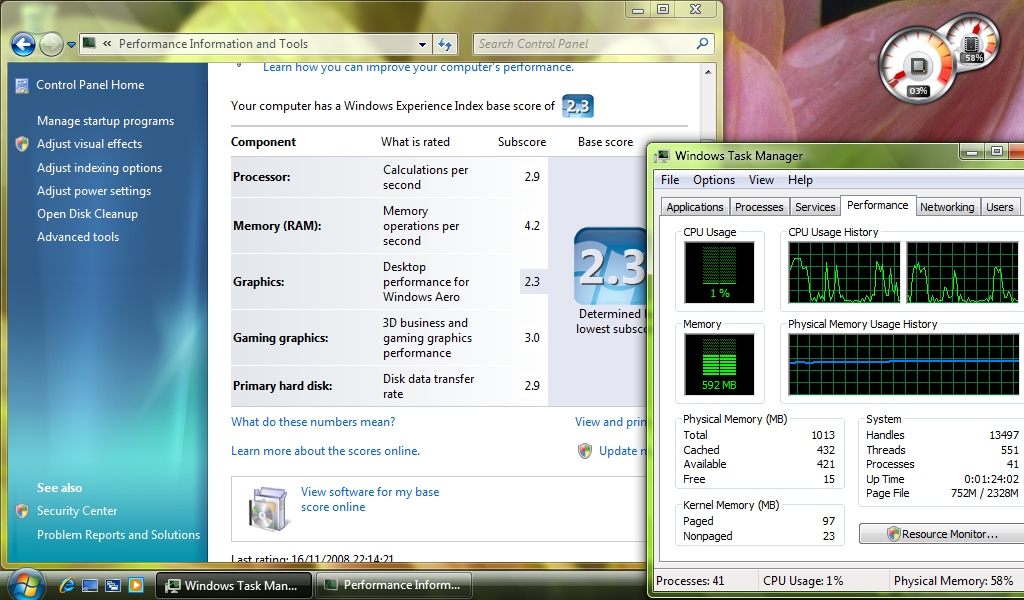Windows 7 netbook system specs explained
Budget machines running full OS with Aero become a reality

"If I show you the PC I use as my primary machine, I think you'll be surprised," Steven Sinofsky told us just before this year's Professional Developers Conference.
The next day the Senior Vice President of the Windows team showed off the Lenovo IdeaPad S10 running Windows 7, and the next week at the Windows Hardware Engineering conference he had an Atom-based Asus EEE netbook with 1GB of RAM in his hands.
At the same event Microsoft showed a Dell Inspiron Mini 9, an MSI Wind, an Asus Bamboo and even the VIA-based HP Mini-Note 2133 all running Windows 7 with full Aero and no missing features.
Don't expect system requirements until next year, but Windows 7 will give you "a good user experience" on a 1.6GHz Atom processor with 1GB of RAM and 16GB of disk space, according to Windows Lead Program Manager Leon Braginski.
Memory use reduced
It uses around half the memory (less with a WDDM 1.1 driver that uses the graphics chipset to handle multiple windows so the amount of memory needed by the Desktop Window Manager doesn't grow linearly as you open more windows). And it takes around 8GB of disk space. That's not just Windows files, Braginski explains, but a realistic measurement of the space Windows will need over the lifetime of the PC: "the Windows footprint includes log files, memory dumps, caches, restore points, the page file, the hibernation file and so on, and the Windows 7 disk footprint will be smaller than Vista".
Over 1GB of that footprint in Vista is pre-installed drivers, and Windows components add another 500MB. Microsoft doesn't plan to reduce those much, but Sinofsky says the beta of Windows 7 will extend the list of 'optional components' which are installed but not loaded by default.
Sign up for breaking news, reviews, opinion, top tech deals, and more.
Even in the pre-beta this is much more granular; you can remove XPS support, gadgets or tablet features. Even if you have tablet features loaded, the component won't actually be in the memory unless you have tablet hardware on your PC.
The same goes for services like BitLocker; if you don't have an encrypted drive in the PC, the BitLocker service won't be running. Like the power-saving features, these performance improvements apply to any Windows 7 machine but they'll matter more on low-power netbooks.
Solid state issues
A 16GB solid-state drive (SSD) isn't just a small drive; it has very different characteristics from a hard drive of any size. Vlad Sadovsky, an architect in the Windows team, says that "we are tuning not for SSD but for devices with low latency" and Intel Fellow Knut Grimsrud agrees that "if software is trying to help based on near-term assumptions about SSD it's very likely to become a long-term hindrance". But there are some specific changes in Windows 7 to make it work better with SSDs, including some proposed logo requirements that will mean SSDs using an internal USB connection won't be supported.
Some of the requirements are needed to work around the fact that although you can read data from an SSD much faster than from a hard drive, it's actually ten to a hundred times slower to write files. This is because the sectors of the SSD have to be erased before they can be written and a sector can't be overwritten in the same location if the information in it changes. So unchanged information in the same file may need to be written again.
This causes 'write amplification' which affects both performance and the lifetime of the drive, which can only erase sectors a fixed number of times; an issue that Microsoft wants to address by adding the Trim command (a standard it proposed that will be implemented in new SSDs).
Mary (Twitter, Google+, website) started her career at Future Publishing, saw the AOL meltdown first hand the first time around when she ran the AOL UK computing channel, and she's been a freelance tech writer for over a decade. She's used every version of Windows and Office released, and every smartphone too, but she's still looking for the perfect tablet. Yes, she really does have USB earrings.